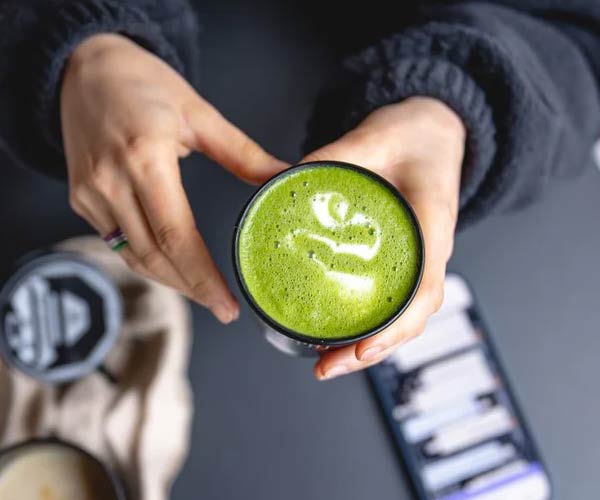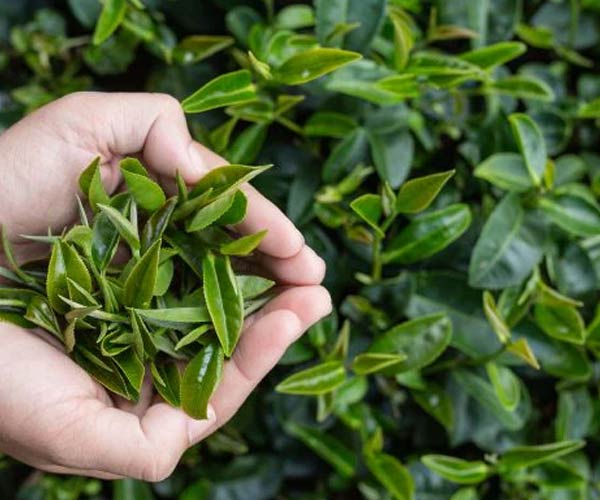Tea plays a central role in Japanese culture, and among the various varieties, sencha, tencha, and matcha stand out as fascinating varieties. Each has its own history, production method, and flavor nuances that captivate lovers around the world. This article explores the subtle differences between sencha, tencha, and matcha, from their origins to their artful preparation.
Japanese teas are not just beverages, but cultural expressions with deep roots in the country's history and way of life. Let's explore the unique characteristics of sencha, tencha, and matcha together to understand why these teas play such a significant role both in Japan and internationally.
Sencha, Tencha, and Matcha are all three types of green tea and have their origins in Japanese tea tradition. Here are some similarities they share:
Green tea base
All three teas are made from the leaves of the Camellia sinensis plant, meaning they are green teas. The differences between them arise from different processing methods.
What does “cha” mean in Sencha, Tencha and Matcha?
All three names share the syllable "cha," which in Japanese simply means "tea." Whether it's Sencha, Tencha, or Matcha, the "cha" at the end always indicates that we're dealing with a type of tea.
Origin in Japan
Sencha, Tencha, and Matcha all originate from Japan and are essential components of Japanese tea culture. The unique climatic conditions and cultivation methods in Japan influence the taste and quality of these teas.
Health benefits
They also share the health benefits of green tea, including antioxidants that protect cells and various other beneficial health effects.
Participation in tea ceremonies
Sencha, Tencha and especially Matcha often play a role in the Japanese tea ceremony, a ritualized act that embodies tradition, respect and serenity.
Popularity worldwide
Due to their unique flavor profiles and health benefits, Sencha, Tencha and Matcha are also internationally popular and have found their place in the cups of tea lovers around the world.
Although these teas share similarities, their uniqueness lies in the specific processing methods and the resulting differences in taste and aroma.
Introduction to Japanese Green Tea
Green tea plays a central role in Japanese culture and history. It is not just a beverage, but an integral part of daily life. The tradition of tea drinking in Japan dates back to the 9th century, when Buddhist monks imported tea from China. Over the centuries, a unique Japanese tea ceremony has developed, rooted in the appreciation of simplicity, beauty, and respect.
The three main varieties of Japanese green tea – Sencha, Tencha and Matcha – represent different aspects of this rich tradition.
Sencha
Sencha is one of the most widely cultivated green tea varieties in Japan and is known worldwide for its refreshing flavor. Sencha production involves steps such as steaming, rolling, and drying the tea leaves. Unlike other green tea varieties, Sencha is grown and harvested under direct sunlight.
What does the word "Sen" mean in Sencha?
The name Sencha is composed of two parts: "Sen" and "cha." While "cha" simply means "tea," "Sen" means "to pour" or "to infuse" in Japanese. This indicates that Sencha is traditionally prepared as an infused tea—not as a powder like Matcha.
Its characteristic bright green color and fresh, grassy aroma make Sencha a popular choice. When brewed, it develops a clear, golden cup, providing a refreshing everyday cup of tea.
Taste differences between early and late Sencha harvests
An interesting aspect of Sencha is the influence of the harvest time on the tea's aroma. The first pickings of the year, known as "Shincha" or first flush, are characterized by a particularly mild and sweet flavor. These early leaves contain more amino acids such as theanine, which provide a pleasant umami note.
With later harvests, the flavor gradually shifts. The leaves picked later develop a stronger, sometimes more tart character with noticeably more bitterness. This gives the tea more depth, but loses some of the lightness and sweetness typical of the early season.
The choice between early and late harvested Sencha can vary depending on your preference between a fresh, sweet cup and a stronger, more bitter taste experience.
Tencha
Tencha differs from sencha in its cultivation and processing process. To produce tencha, the tea bushes are shaded for approximately 20 to 30 days before harvest. This shade-drying process promotes the development of chlorophyll and amino acids, resulting in a sweeter and more complex flavor profile.
The dried, delicate tencha leaves are not rolled, but retain their flat shape. What makes tencha special is its use as a raw material for the production of matcha.
Why Tencha is considered an insider tip
Tencha is so rare outside of Japan because it is primarily reserved for the production of matcha and is therefore only offered in small quantities as a standalone tea. The elaborate shading of the tea bushes, followed by the delicate processing of the leaves, ensures that tencha tastes particularly smooth and aromatic – completely without bitterness.
Anyone who tries pure tencha will discover a smooth, slightly sweet green tea with a subtle umami flavor. Since most teahouses and shops outside of Japan usually only offer sencha or pre-processed matcha, tencha has established itself as a true insider tip for adventurous tea lovers. Its exclusivity and unusually mild character make it a special rarity for connoisseurs.
Use of Tencha in Japanese cuisine
Although tencha is primarily known as the base for matcha, it is occasionally brewed neat and appreciated for its mild, delicate aroma. Tencha also plays a versatile role in Japanese cuisine: The leaves enrich numerous dishes with their gentle flavor.
Tencha is used, for example, as a special ingredient in desserts such as cakes, cookies, or ice cream, to refine rice dishes, and as an addition to savory dishes such as sauces or dressings. Due to its mild flavor, tencha blends perfectly with both sweet and savory recipes and brings a touch of Japanese sophistication to the home kitchen.
Matcha
Matcha, often referred to as "green gold," is one of the highest-quality and most fascinating green teas. The process of making matcha begins with the careful selection of the finest tencha leaves. These leaves are slowly ground into a fine, vibrant green powder, which is used to make matcha tea.
Matcha has a rich, creamy consistency and an intense, sweet aroma. Due to its role in the Japanese tea ceremony, matcha is often considered a symbol of harmony, appreciation, purity, and serenity.
Tips for optimal storage of Matcha
Proper storage is crucial to ensure that high-quality matcha retains its intense flavor and vibrant green color for as long as possible. Like other finely processed foods, matcha is sensitive to light, air, moisture, and heat. If stored improperly, both the aroma and color will noticeably fade.
These tips for optimal storage have proven to be effective:
Always store matcha in an airtight container. Ceramic containers with inner lids or special matcha containers from manufacturers like Chazutsu offer ideal protection. Store matcha in a cool, dry place—preferably the refrigerator. However, be sure to reseal the container tightly after each use to prevent condensation.
Keep matcha away from strong odors, as the fine powder quickly absorbs off-flavors. Always use only the amount of powder you need for one serving and reseal the container immediately. This ensures your matcha experience remains fresh and aromatic every time you prepare it.
Versatile uses of matcha powder
In addition to traditional tea preparation, matcha has long since found its way into numerous culinary creations. The bright green powder not only enhances traditional desserts like mochi or wagashi, but also enriches many Western recipes. Matcha is especially popular in:
Desserts like ice cream, panna cotta, or tiramisu; pastries and cakes, such as biscotti, muffins, or Swiss rolls; chocolate and praline creations that take on a special depth thanks to the tart-sweet flavor of matcha; yogurt and muesli bowls for a colorful start to the day; smoothies, shakes, or even latte variations, where the fine powder is whipped with milk or plant-based milk.
Matcha is valued both in the upscale patisseries of European cities and in the kitchens of adventurous amateur cooks – as a flavorful and visually appealing ingredient that brings Far Eastern sophistication to the plate or glass.
Why is matcha a premium product and what explains the price?
What makes matcha such a special—and often expensive—green tea? The reason lies in the exceptional care and time-consuming production process. Only the most delicate, shade-grown tencha leaves are used for high-quality matcha. After harvesting, these leaves are carefully steamed and dried to preserve their flavor and color.
Next comes what is probably the most laborious step: The leaves are ground into an extremely fine powder using traditional granite mills. A full 30 grams of matcha is produced after about an hour of grinding—making the process both labor-intensive and material-friendly.
This effort is reflected not least in the quality: Matcha captivates with its brilliant green color, its complex, umami-rich flavor, and its velvety texture. Due to this unique profile and limited production quantities, it is one of the most exclusive teas in the world – a premium product that is highly valued, especially for the Japanese tea ceremony.
Taste profile and aroma
The differences in taste and aroma between Sencha, Tencha, and Matcha reflect the diversity of Japanese tea culture. Sencha, with its clear, refreshing flavor, tends to have a slightly grassy and slightly bitter note. Direct sunlight during growth gives it a bright, golden cup and an invigorating character.
Tencha, due to the shade-drying process, offers a more complex flavor profile. The shade promotes the production of amino acids, particularly L-theanine, resulting in a sweeter, more full-bodied flavor. Tencha tends to be less bitter than sencha, offering a more subtle, umami-rich experience.
Matcha, on the other hand, comes as a fine powder and offers a completely unique flavor dimension. By drinking the whole leaf in powder form, you not only get the flavors but also all the nutrients of the tea. Matcha is often more intense, creamier, and sweeter than sencha and tencha.
Health aspects
Green tea, including sencha, tencha, and matcha, is known for its health benefits. All three varieties contain antioxidants, particularly catechins, which are considered powerful compounds that can protect against free radicals. Shade-drying tencha and processing it into matcha can increase its content of certain nutrients, such as chlorophyll and amino acids.
Matcha is often considered particularly beneficial for health because it offers a higher concentration of nutrients per cup. Drinking matcha means consuming the whole leaf, resulting in a richer intake of vitamins and minerals.
Preparation tips
The preparation of Sencha, Tencha and Matcha requires different techniques and accessories.
Sencha
This tea is traditionally brewed with hot water at approximately 70-80°C. It's important to keep an eye on the brewing time to avoid bitterness.
Tencha
Since tencha is not rolled but remains flat, its preparation is similar to that of sencha. It is recommended to use slightly cooler temperatures to emphasize the sweet notes.
Matcha
Matcha preparation requires special equipment such as a bamboo whisk (chasen). A small amount of powder is whisked with hot water until creamy. This process brings out the rich flavors and velvety texture of matcha.
Each of these green tea varieties represents not only a unique taste but also a deep connection to Japanese history and tradition.
Whether you prefer the invigorating freshness of sencha, the complexity of tencha, or the rich intensity of matcha, Japanese green tea offers a fascinating palette of flavors and experiences. In a world constantly changing, green tea remains a timeless symbol of tranquility and enjoyment.




Leave a comment
This site is protected by hCaptcha and the hCaptcha Privacy Policy and Terms of Service apply.